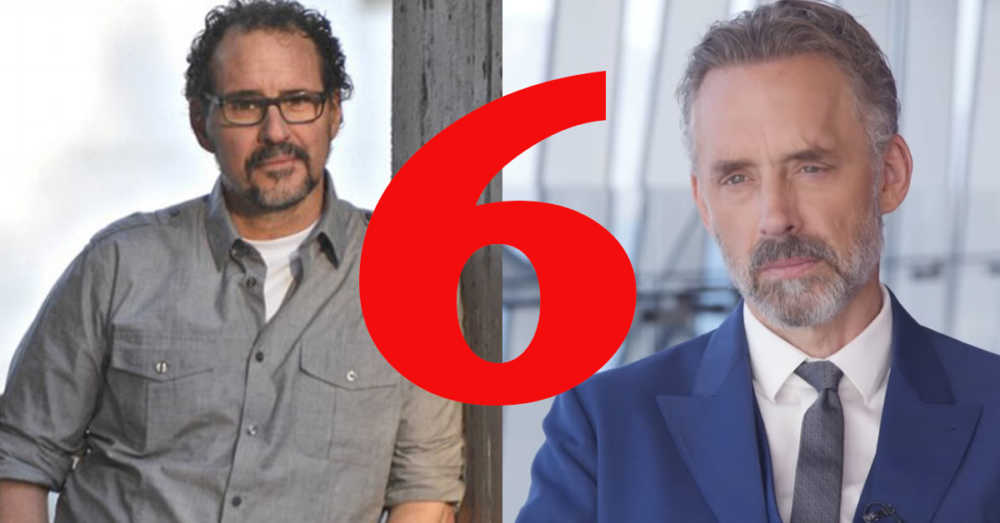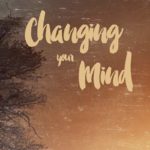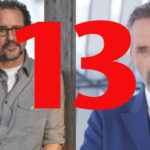We run our website the way we wished the whole internet worked: we provide high quality original content with no ads. We are funded solely by your direct support. Please consider supporting this project.

Part 6 (of 15): Evolutionary Conservatism
Assessing Jordan Peterson’s 12 Rules for Life
by Greg Boyd
“If reality is that which selects, then what’s selected by that reality
must in some sense be correct.”
Evolutionary Wisdom
As was true of Heraclitus and Lao Tzu, and as a number of domains of contemporary science have demonstrated over the last century, Peterson believes that reality itself is structured as a delicate dance between order and chaos, and every aspect of this dance is perpetually changing (1). From a biological perspective, evolution is what this dance has looked like for the last five-hundred million years up to the present (11-13). For this reason, Peterson believes that every advance in the evolutionary process reflects a sort of dancing wisdom – not in the sense of being directed by a higher intelligence, but simply in the sense of finding a way to survive. Species survive to pass on their DNA by discovering novel and more efficient ways of preserving order and managing chaos in their dance with their ever-changing environment. Those species that failed to adapt to new circumstances, when adapting was necessary for survival, eventually disappeared.
For Peterson, this means that human nature reflects the accumulated survival strategies of the entire evolutionary process leading up to us. There are aspects of this inherited nature we don’t understand, and many aspects that we may wish were different. For example, at many points in 12 Rules of Life, Peterson notes that western liberals obviously wish aggression wasn’t so deeply entrenched in the nature of males, which is why they insist, against all the available evidence, that aggression is a learned behavior (e.g.126, 317). Pushing back on what he believes is a bias against aggression in boys, Peterson argues that aggression is deeply anchored in their nature and that it simply reflects our evolutionary inheritance (317-19). Like it or not, the dance of evolution has always been a violent, deadly dance (13), and any organism or species that lacked sufficient aggression was eventually selected out of this dance. So, while Peterson grants that aggression in both boys and girls must be tamed, first by parents and then, if the parents haven’t done an adequate job, by culture (143-44, 318), the very fact that humans have an inherited aggressive nature means that humans should have an aggressive nature.
The Wisdom of Culture
In Peterson’s view, the same holds true for the evolution of human culture—once our never-ending dance with chaos led us to begin to form societies and develop culture. We learned that it is in every individual’s best interest to develop and abide by rules that curb our individual freedoms but that also allow us to enjoy the additional security of living in a harmonious group. Moreover, every advance in the evolution of human culture reflects the wisdom of a species that learned a more efficient way of preserving order and fending off the chaos that perpetually threatens us.
Here too, there are aspects of culture that we may not understand (we’ll later see that Peterson believes ancient myths have much to teach us on this matter). And there certainly are aspects of culture we don’t like. For example, Peterson notes that
…culture is an oppressive structure. It’s always been that way. It’s a fundamental, universal existential reality….It crushes, as it hammers us into socially acceptable shape, and it wastes great potential (302).
Still, as oppressive and otherwise unpleasant as it is, Peterson argues that the very fact that cultural traditions, which include the culture’s religious traditions, have persevered over time means they must be considered wise. People who “think about culture only as oppressive,” are “ignorant,” “ungrateful,” and “dangerous” (303). Their perceptions are warped by an ideology, and for Peterson, ideologies always over-simplify reality by reducing it down to one storyline. By contrast, Peterson regularly encourages people to trust the wisdom of our traditions and to allow them to inform our values and goals (e.g. 119, 221). They embody the wisdom of our past, the very wisdom that has allowed us to continue to survive (e.g. 163-64).
This doesn’t mean that Peterson thinks cultural or religious traditions should never be challenged or improved, for humans continue to evolve like everything else.
For example, immediately after noting that people who think about culture only as oppressive are ignorant and dangerous, Peterson goes on to say: “This is not to say (as I am hoping the content of this book has made abundantly clear) that culture should not be subject to criticism” (302-03). But he certainly thinks that these traditions must be deeply respected and changed very slowly and very carefully, if they are to be changed at all. Put in other terms, since social (as well as personal) change always involves taking a step beyond the “known” (order) into the “unknown” (chaos), and since we are always less competent navigating the “unknown” than we are the “known,” it is folly to take this step hastily and without due consideration for what we may learn from the past. And one of the lessons Peterson would have us learn from the past is that order is a fragile thing and can be quickly overwhelmed by chaos if we do not respect the cultural order that got us this far.
The Conservative Nature of Evolution
As Peterson sees it, the correctness of a socially conservative posture, such as he advocates, is ultimately grounded in the conservative nature of the entire evolutionary process itself. “When something evolves,” he notes, “it must build upon what nature has already produced.” And, he continues:
New features may be added, and old features may undergo some alteration, but most things remain the same. It is for this reason that the wings of bats, the hands of human beings, and the fins of whales look astonishingly alike in their skeletal form… Evolution laid down the cornerstones for basic physiology long ago (11).
For Peterson, the fact that the evolutionary dance between order and chaos has always proceeded conservatively, both at a biological and (usually) at a cultural level, suggests that this is the wisest way to dance. Put in practical terms, it’s far easily to make things worse than it is to make things better, which simply reiterates the point that social change should be brought about cautiously. Conversely, Peterson argues that all attempts to force a speedy social change to advance some ideology and move towards a utopian dream are unwise and dangerous, for they are contrary to nature. People who attempt this are not respecting the accumulated wisdom of the biological and cultural dance that has gotten us to where we are.
To illustrate, consider Peterson’s response to those liberals who are concerned with the needs of people who do not fit neatly into the categories of “male” and “female” and who assume that “individual problems, no matter how small, must be solved by cultural restructuring, no matter how radical.”
“Our society faces the increasing call to deconstruct its stabilizing traditions to include smaller and smaller numbers of people who do not or will not fit into the categories upon which even our perceptions are based. This is not a good thing. Each person’s private troubles cannot be solved by a social revolution, because revolutions are destabilizing and dangerous. We have learned to live together and to organize our complex societies slowly and incrementally, over vast stretches of time, and we do not understand with sufficient exactitude why what we are doing works. Thus, altering our ways of being social carelessly in the name of some ideological shibboleth (diversity springs to mind) is likely to produce far more trouble than good, given the suffering that even small revolutions generally produce.
And then he sounds an ominous alarm:
Horror and terror lurk behind the walls provided so wisely by our ancestors. We tear them down at our peril. We skate, unconsciously, on thin ice, with deep, cold waters below, where unimaginable monsters lurk (119).
Perhaps Peterson’s most succinct articulation of the biological foundation of his social conservatism is found in his 2016 debate with atheist Susan Blackmore. At one point in this debate Peterson defines “reality” as “that which selects,” and then goes on to argue: “If reality is that which selects, then what’s selected by that reality must in some sense be correct” (emphasis mine) (2). Since human nature and culture are the end result of millions and millions of years of “reality” repeatedly “selecting” one type of order over all alternative types of order, and since human nature and culture, as we currently find them, are the result of this selecting process, it follows, according to Peterson, that we should consider human nature and culture, as we currently find them, to “in some sense be correct.” They are what allowed us to get this far. And they are “correct” in this sense whether we like them or not, and whether we understand them or not.
Because our nature and culture are “correct” only in the sense that they reflect our successful adaptations to changing circumstances, and because humans and everything else continues to evolve, Peterson insists that we must always strive to improve our nature and our culture. But as we indulge the drive to explore the “unknown,” without which our order would become stagnant and oppressive, Peterson warns us to remember that inherently conservative nature of evolution. Every advance retains, and builds upon, all that preceded it. So, again, we must balance our drive to explore the “unknown” with full recognition of our need to stay rooted in the stability of the “known.”
It is from this premise that Peterson draws all of his conservative, and highly controversial, ethical conclusions, as we shall begin to explore and critique in the following post.
__ __ __
1 — On contemporary science’s discovery that reality is structured as a dance between order and chaos, see Giuseppe Del Re, The Cosmic Dance: Science Discovers the Mysterious Harmony of the Universe (Philadelphia: Templeton Foundation Press, 2000). For a light-hearted treatment of the same topic, with an emphasis on its implications for theology, see G. Boyd, The Cosmic Dance: What Science Can Teach Us About The Nature of Time, Life, God & Humpty Dumpty (St. Paul, MN: ReKnew Publications, 2016).
2 — See: Unbelievable.
Category: General
Tags: Book Reviews, Books, Jordan Peterson
Related Reading

Greg’s Review of Changing Your Mind by Victor Copan
Several months ago Victor Copan introduced himself to me at the end of a Woodland Hills Church service. He told me about his recently published book, Changing Your Mind. “I know you’re into spiritual disciplines and neuroscience,” he said, “so I suspect you might enjoy my book. It’s about the interface of these two topics.”…

The Patriot’s Bible — Really?
Have you ever seen the Saturday Night Live skit entitled “Really? With Seth and Amy”? Sometimes it’s pretty funny. I was thinking that perhaps the best way to get through my critique of The American Patriot’s Bible (henceforth Patriot’s Bible) would be to give a “Really?” type report on it. I want to preface my…

Book Review: Understanding Spiritual Warfare: Four Views
I just got the pre-release copy of Understanding Spiritual Warfare: Four Views, edited by my friends James Beilby and Paul Eddy (IVP, 2012). The introduction alone is worth the price of the book! It is the clearest, most comprehensive, yet most succinct overview of the concept of spiritual warfare throughout church history that I’ve ever…

Part 13 (of 15)— Taking Responsibility (Part A)
Assessing Jordan Peterson’s 12 Rules for Life by Greg Boyd “If you’re not the leading man in your own drama, you’re a bit player in someone else’s.” Jordan Peterson If I had to sum up the essence of Peterson’s philosophy in a single sentence, it would be: “Take responsibility for your own life.” In this…

Satan and the Problem of Evil Endorsements
Endorsements: “Greg Boyd has shown us that the most powerful way to view God in a postmodern world is through the eyes of the warfare worldview of Scripture. This biblical argument not only makes sense of our ravaged world, it turns us to the only hope we have–a world whose end is in the hand…

For All You Creative Types Out There
This book is free today and tomorrow on Kindle if you’re creative and you find it hard to find time for your gifts. You’re welcome.
